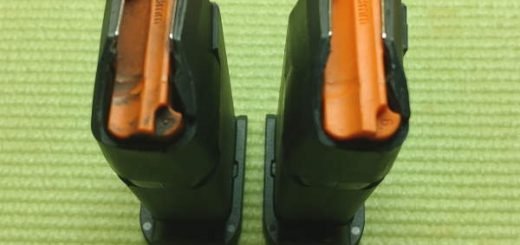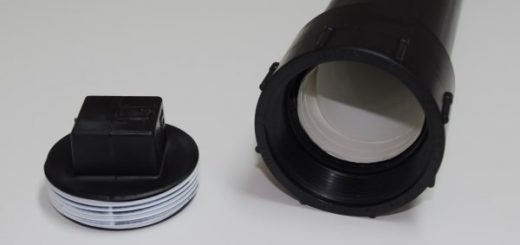How To Make A Better First Aid Kit – Free Guide

We’ve put together a free First Aid Kit Worksheet to help you get started with making your own kits to both save money and get exactly what you need. The focus is to help you develop an organized and effective methodology for creating first aid kits, as well as a list of specific contents and a few ideas that will make packing and using your kits easier.
Below, are some of our specific recommendations for items to go into your kits, sorted by category:
Stop Bleeding
Telfa Non-Adherent Dressing, 3″ x 4″
Israeli 6-inch Compression Bandage
Recon Medical Gen 4 Tourniquet
Prevent Infection
Purell Premium Sanitizing Wipes
Triple Antibiotic Ointment 25 Packets
Triple Antibiotic Ointment, 100 Packets
Sprains/Strains
Cold and Flu Complications
Fever
Burns
Tools
Tweezerman Stainless Steel Tweezers
Streamlight Stylus Pro Pen Flashlight
Comfort/Other
Band-Aid Advanced Healing Blister Cushions (Compeed)
Emergency Mylar Thermal Blankets
Everyone should have a personal first aid kit that they can take with them when they leave the house. This is not the “big kit” that is scattered around your medicine cabinet and under the bathroom sink or the kit in a plastic box that you might keep in a car or truck. You need a kit that will fit in your purse, backpack or laptop bag because bad things happen unexpectedly. Most people don’t plan to have accidents, but they happen anyway. Besides, a visit to the doctor is expensive and prevention is an easier and cheaper option. While you can certainly get your finger lanced, the pus drained and then take oral antibiotics for a week, it would be more pleasant to just clean and cover the wound and prevent infection. Also, there are times, such as natural disasters, where a doctor is not always readily available or accessible. Having some basic supplies within reach can go a long way to preventing a variety of serious problems.

When putting together a first aid kit, it is important to keep your skill level in mind. There is no point in buying a bunch of expensive gear you don’t know how to use or is only useful in specialized situations that are unlikely to occur. Being realistic should be an important part of your planning. Hemostatic agents such as (QuikClot and CELOX) work well, but should not be at the top of your shopping list, since they are infrequently needed and rather expensive. Field surgical kits are somewhere between useless and scary in the hands of a person who does not know what they are doing. An injured person is not a Chevy where you can just pop the hood and replace a part or two and then just crank them back up and they are good for another 30k miles.
When planning what you are going to put into your first aid kit, there are a few main factors to consider. First, honestly assess your current level of medical training and consider picking up some more, if you are not happy with your current skill level. There are multiple, relatively inexpensive options to add to your current level of knowledge: Red Cross classes, community college classes, online training, books from the library, Amazon.com books, and local CERT classes. There are plenty of options from short classes that cover the basics, to more detailed ones that lead to different certifications. I’ve had the opportunity to take a few different classes and have gotten something out of each one. Even now, I don’t consider myself any kind of medical expert and still keep my eyes open for opportunities to pick up or practice skills. Knowing what to do and when to do it could literally save the life of a friend or neighbor.
Also, it is important to think about what problems can really be treated. Even now, if your flaming car goes flying off of a cliff and explodes on the rocks below, the outlook is grim. It doesn’t matter if you hit the ground next to a hospital that is having an EMT convention in the parking lot. Even with modern medicine, not everything can be fixed. We should also take a look at historical disasters to help build a list of priorities, based on what issues have been the most serious concerns in the past. Putting these two factors together can give us a list of realistic priorities that will allow us to treat the most common and serious problems that we are likely to encounter. In short, we want to be able to stop bleeding, help prevent infection, deal with flu complications, handle fever, treat sprains/strains, provide comfort and take care of personal medical needs. It is up to you to decide how much space to dedicate to meeting this list of needs and how much emphasis to put on each one of them.

It does not do any good to have something, like meds or band aids, and not be able to find them when they are needed. This is especially true if you are dripping blood on the carpet while you look for where you put the gauze. Having your gloves, light, tape, meds, bleeding control supplies and such where you can find and access them in a hurry is all about organization. The kit I carry to work lives in a Maxpedition FR-1 Pouch, which is built like a tank. You could tie it onto the back of a bicycle, wreck the bike and the contents would be in good shape to help treat the nice fresh case of road rash. The main zippered compartment has multiple elastic loops for organizing contents. There is a zippered pouch on one side, which is an excellent place to store meds. The other side has an elastic topped pocket, which is a good fit for a roll of tape and a few pairs of gloves. The FR-1 has a flashlight sleeve on the outside of the case, so you can get your hands on a flashlight without having to open and dig through your supplies. For more granular organization and to add a second layer of protection against water, it is a good idea to arrange parts of your kit in Ziploc type bags. If you need some small Ziploc-style bags, the craft section of your local Walmart should have a few different sizes to choose from. No matter what first aid supplies are selected and how they are carried, having a well-organized kit will go a long way towards being prepared for emergencies.

We put together a three page PDF guide to help you put together your own first aid kits: “These pages will help you put together a set of effective First Aid kits that are tailored for your location, budget, and needs. The goal is to have some basic supplies that will let you treat common problems that arise in emergency situations…”



